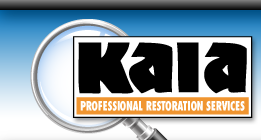TESTING SERVICES WE OFFER
Listing of Services:
Mold Assessment including 3 samples
- Additional samples as needed per site inspection
Visual Mold Assessment
Post Remediation Assessment includes 2 samples
- Additional samples as needed per site inspection
Flood Assessment
Included in the cost of each service is a copy of the lab results and a comprehensive report addressing potential next steps.
NOTE: Gas Sur-Charge determined by current market price.
MOLD TESTING
Mold Testing is important and beneficial for a number of reasons. One reason is to discover what types of mold are present. Benefits of testing include receiving a spore count of each mold present and determining what areas of the home or business are affected.
Pre-Remediation Testing
An indoor air quality testing company should test for microbial issues to detect the necessary criteria for proper remediation. Once the conditions are identified a qualified remediation company should immediately begin to get the problem under control.
Post-Remediation Testing
After we have completed the remediation. Post-remediation testing should be done by a qualified Indoor Air Quality company. This will clear the project for rebuild.
Reconstruction
This is the final step in the process. The project is turned over to qualified builders for reconstruction. It is important that this step is started only after the project has been cleared.
Our Cleaning Services
Indoor Air Quality Today
The quality of indoor air has become one of the most important ecological issues of this decade. Dirty duct systems are a major source of indoor air pollution. Airborne contaminants are pulled into the ducts every time the heating and cooling systems run. Over time, these contaminants build up inside the ductwork, creating an ideal breeding ground for mold, bacteria, fungi and other microbes.
Particles drawn into the air ducts also pass through fiberglass filters and infiltrate the HVAC equipment, undermining the performance and energy efficiency of these systems. That can lead to higher repair and maintenance costs, and shorter service life in the long run. According to the EPA, a build-up of only 0.42" of dirt on a heating or cooling coil can decrease efficiency by 21%.


